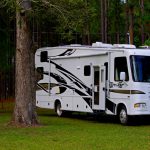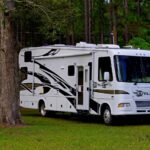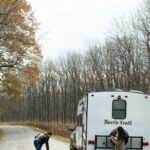Have you ever found yourself exhausted after a long day of driving your RV, thinking there must be a better way to travel? Well, you’re in luck because the 2/2/2 rule might just be the game-changer you need. This rule isn’t just a random set of numbers; it’s a strategy that seasoned RVers swear by to make their journeys more enjoyable and less tiring. And guess what? We’re here to dive deep into this topic, outshining the “Common RV Trip Planning Mistakes – Crossroads Blog” with not just a handful but a plethora of insights and tips that will revolutionize your RVing experience in 2024.
Table of Contents
- Quick Answer
- Quick Tips and Facts
- The Journey Behind the 2/2/2 Rule
- Why the 2/2/2 Rule Beats the Rest
- Maximizing Your RV Experience with the 2/2/2 Rule
- The 3-3-3 Rule: A Close Relative
- Choosing the Right RV for Your 2/2/2 Adventures
- FAQ
- Conclusion
- Recommended Links
- Reference Links
Quick Answer
The 2/2/2 rule for RVing is a simple yet effective travel guideline that suggests driving no more than 200 miles per day, arriving at your next destination by 2 PM, and staying for at least 2 nights. This rule aims to reduce travel fatigue, increase enjoyment, and allow ample time for exploration and relaxation.
CHECK PRICE on: RV Essentials
Quick Tips and Facts
- ✅ Reduces Fatigue: Limiting daily driving to 200 miles helps prevent exhaustion.
- ✅ More Exploration Time: Arriving early gives you more time to explore your surroundings.
- ✅ Better Campsite Availability: Early arrival often means better campsite choices.
- ✅ Increased Relaxation: Staying two nights in one place reduces the need to constantly pack and unpack.
The Journey Behind the 2/2/2 Rule
The 2/2/2 rule isn’t just a random set of guidelines; it’s born out of the collective wisdom of countless RVers who have found it to be the sweet spot for balancing travel and relaxation. This rule emphasizes the importance of taking your time, enjoying the journey, and making the most out of each destination.
Why the 2/2/2 Rule Beats the Rest
While there are other travel rules like the 3-3-3 rule or the 4 4 4 rule for RV, the 2/2/2 rule stands out for its simplicity and effectiveness. It’s easy to remember and implement, making it ideal for both seasoned RVers and beginners alike.
Maximizing Your RV Experience with the 2/2/2 Rule
To truly benefit from the 2/2/2 rule, planning is key. Use apps like RV Trip Wizard to map out your route, ensuring you have a list of potential campsites within your 200-mile range. Also, consider the activities you want to enjoy at each destination to make the most of your stay.
The 3-3-3 Rule: A Close Relative
The 3-3-3 rule suggests driving no more than 300 miles, arriving by 3 PM, and staying for 3 nights. While it’s a great alternative, the 2/2/2 rule is often more manageable for those who prefer shorter driving days and more frequent stops.
Choosing the Right RV for Your 2/2/2 Adventures
Selecting an RV that fits your travel style is crucial. For couples, a compact yet comfortable RV might be ideal, while families might prefer something with more space and amenities.
Shop Luxury RVs on: RVShare | Outdoorsy | Camping World | Amazon | Walmart | eBay | Luxury RVs Official Website
FAQ
What is the 3-3-3 rule for RVing?
The 3-3-3 rule suggests driving no more than 300 miles, arriving by 3 PM, and staying for 3 nights. It’s a variation of the 2/2/2 rule, offering a slightly more relaxed pace for those who prefer it.
What is the 4 4 4 rule for RV?
While not as commonly referenced, the 4 4 4 rule suggests driving up to 400 miles, arriving by 4 PM, and staying for 4 nights. It’s suited for those who don’t mind longer driving days and wish to spend more time at each destination.
How long should you drive an RV each day?
To avoid fatigue and make the most of your journey, it’s recommended to drive no more than 200-300 miles per day, aligning with the 2/2/2 or 3-3-3 rules.
What size RV is best for 2 people?
For two people, a Class B motorhome or a small Class C motorhome is often ideal, offering enough space and amenities for comfort without being overly large or difficult to maneuver.
Conclusion
The 2/2/2 rule for RVing is more than just a guideline; it’s a philosophy that encourages taking the scenic route, enjoying the journey, and making every destination count. Whether you’re a seasoned RVer or planning your first trip, incorporating this rule can significantly enhance your travel experience. So, why not give it a try on your next adventure?
Recommended Links
- CHECK PRICE on: RV Essentials
- Shop Luxury RVs on: RVShare | Outdoorsy | Camping World | Amazon | Walmart | eBay | Luxury RVs Official Website
Reference Links
- For more insights on RV trip planning mistakes, visit Common RV Trip Planning Mistakes – Crossroads Blog.
- Discover more about full-time RVing at RV Brands™ Full-Time RVing.
- Interested in a custom luxury fifth wheel? Check out Custom Luxury Fifth Wheel RV: Design Your Dream RV 2024.




